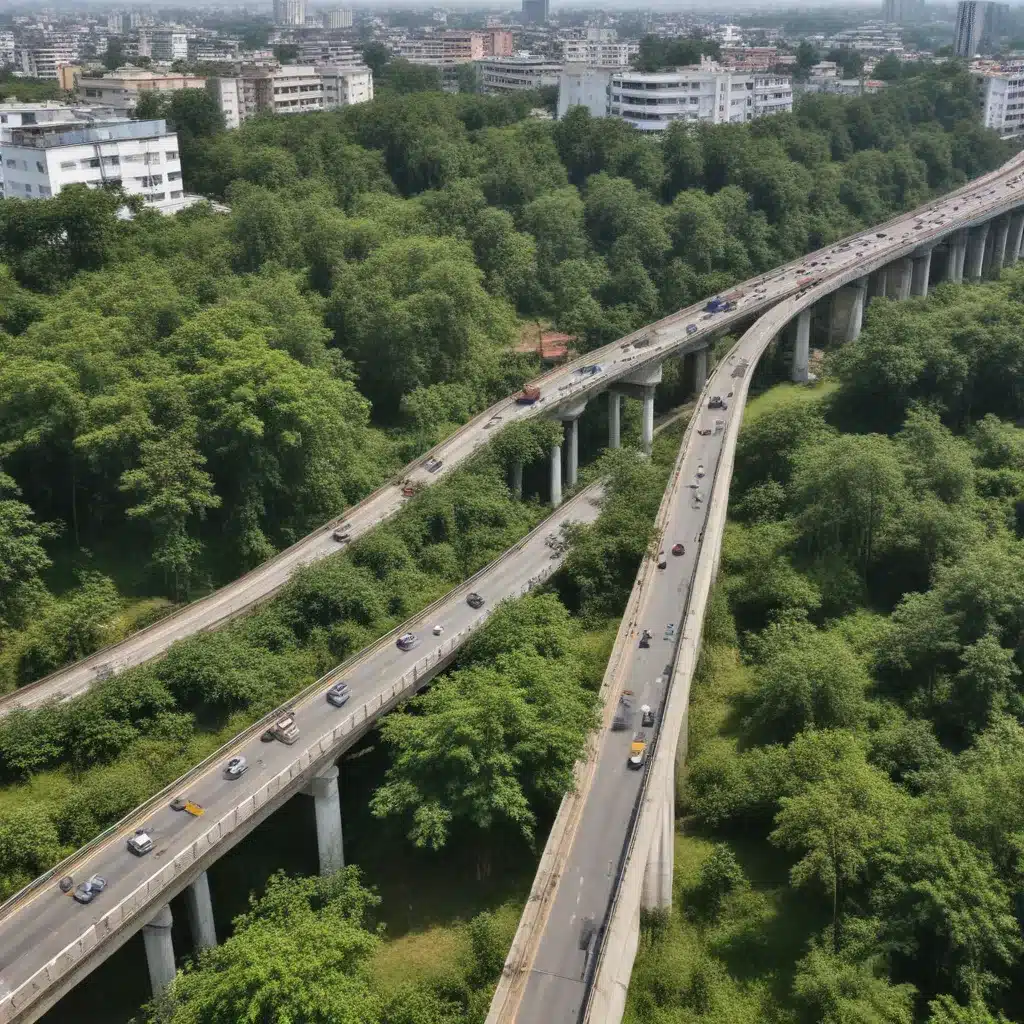
‘Guwahati’s Fight to Save Urban Forests from Flyover Development’
Guwahati’s Urban Forests: Bastions of Biodiversity and Ecosystem Services
As the largest city in the northeastern Indian state of Assam, Guwahati is a bustling metropolitan hub that has long grappled with the challenges of rapid urbanization. At the heart of this vibrant urban landscape lies a precious natural asset: its urban forests. These verdant oases, interwoven throughout the city’s fabric, serve as vital repositories of biodiversity, providing essential ecosystem services that sustain the well-being of Guwahati’s residents.
The city’s urban forests are home to a diverse array of flora and fauna. Majestic banyan trees, centuries-old and towering over the cityscape, offer shelter and sustenance to a myriad of birds, insects, and small mammals. Lush riverine forests along the banks of the Brahmaputra River provide critical habitats for migratory avian species, while the Dighalipukhuri area boasts a serene lake surrounded by a verdant canopy that serves as a respite from the urban bustle.
These urban forests play a crucial role in regulating the city’s microclimate, reducing urban heat, and enhancing air quality by sequestering atmospheric carbon and releasing oxygen. Their extensive root systems help to mitigate the risk of soil erosion and flooding, which are perennial challenges in Guwahati. Furthermore, these green spaces offer invaluable opportunities for recreation, cultural activities, and community engagement, fostering a deeper connection between the people and their natural environment.
Threats to Urban Forests: Flyover Development and Infrastructure Expansion
Despite the immense value of Guwahati’s urban forests, they face mounting threats from the city’s relentless pursuit of infrastructure development. The construction of expansive flyovers and the widening of roads have emerged as the primary drivers of deforestation, with centuries-old trees marked for removal to make way for these projects.
The proposed flyover connecting the Noonmati and Dighalipukhuri areas has sparked a fierce backlash from local residents and environmental activists. They fear that the felling of over 20 ancient trees, some dating back more than 200 years, will irreversibly disrupt the delicate ecosystem balance and deprive the city of its vital green lungs.
“Cutting down these century-old trees will not only eliminate crucial habitats for birds and small wildlife but also disrupt the natural air purification and heat-regulating functions they provide,” laments a concerned citizen. “We cannot sacrifice our environment for the sake of convenience and development.”
Alternatives to Flyover Development: Embracing Sustainable Infrastructure
As the debate over the fate of Guwahati’s urban forests rages on, some experts and community members have proposed alternative approaches to urban development that prioritize the preservation of the city’s green spaces.
One such alternative is the prioritization of public transportation infrastructure over car-centric flyovers. By investing in efficient and accessible bus networks, metro systems, and bicycle-friendly lanes, Guwahati can reduce its reliance on private vehicles and mitigate the need for extensive road expansion projects that often come at the expense of urban forests.
“Instead of focusing solely on car-centric infrastructure, we need to create a city where anyone can access any destination through public transport, cycling, or walking,” argues a local urban planning expert. “This shift towards people-centric development will not only conserve our precious green spaces but also foster a more livable, sustainable, and equitable Guwahati.”
Community Involvement and Environmental Conservation
The fight to save Guwahati’s urban forests has galvanized the city’s residents, who have taken to the streets in grassroots protests to voice their concerns and demand that the authorities prioritize environmental conservation over infrastructure expansion.
Holding banners that read “Save Our Trees, Save Our Heritage,” protesters have passionately argued that the impending loss of these ecological and cultural landmarks will irrevocably damage the city’s identity and quality of life. Community leaders and environmental activists have pledged to file a Public Interest Litigation (PIL) to halt the tree-cutting activities until proper environmental impact assessments and community consultations are conducted.
“These trees are not just inanimate objects – they are living, breathing parts of our ecosystem, our history, and our community,” says a local resident. “We cannot simply replace them with concrete and steel. We must fight to preserve this irreplaceable natural heritage.”
Balancing Growth and Conservation: Towards Sustainable Development
As Guwahati grapples with the competing demands of urban growth and environmental preservation, the city faces a critical juncture in its development trajectory. The key to navigating this delicate balance lies in the adoption of sustainable development frameworks that harmonize the needs of the people, the economy, and the natural environment.
One such approach is the integration of green infrastructure into urban planning. This could involve the strategic placement of tree-lined avenues, urban parks, and green corridors that not only enhance the city’s aesthetic appeal but also provide vital ecosystem services and habitat connectivity for local flora and fauna.
“By incorporating nature-based solutions into our urban design, we can achieve a win-win scenario – one that allows for thoughtful development while preserving the ecological integrity of our city,” suggests a landscape architect involved in Guwahati’s urban renewal projects.
The Path Forward: Resilient Cities and Nature-Based Solutions
As Guwahati stands at the crossroads of progress and preservation, the city’s future rests on its ability to chart a course that prioritizes the long-term well-being of its people and the environment. By embracing resilient city frameworks and nature-based solutions, Guwahati can forge a path towards sustainable development that safeguards its precious urban forests and the myriad benefits they provide.
Through a collaborative approach involving policymakers, urban planners, environmentalists, and engaged citizens, Guwahati can create a vision for a greener, more livable city – one that harmonizes the needs of its growing population with the conservation of its invaluable natural assets. By preserving the urban forests that have long defined its character, Guwahati can emerge as a model for sustainable urban development, inspiring other cities to follow suit in their own fight to save their green treasures.
To learn more about how TriCounty Tree Care can assist with your urban forestry and arboricultural needs, please visit our website or contact us today.


